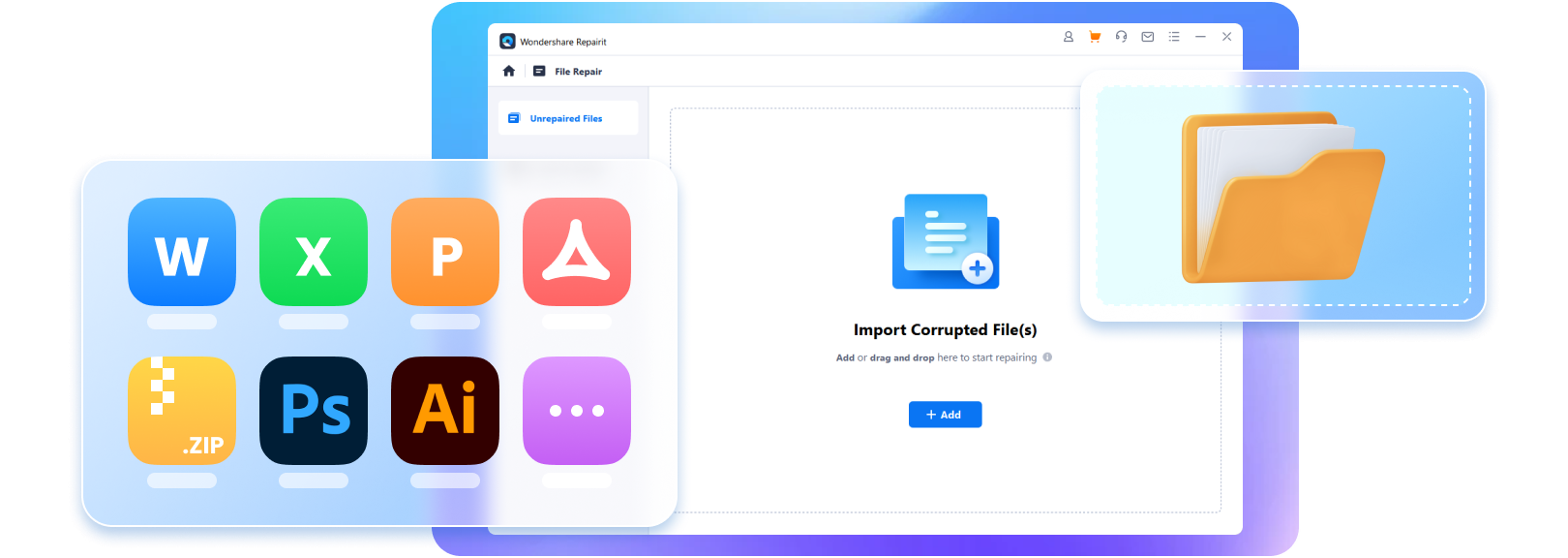It can be very shocking to lose important data or a file while working. And, more disappointing is that you didn't save that document before losing it. Unfortunately, this situation often occurs when you work in Excel or Word. This is where AutoRecover Excel comes handy.
Microsoft has introduced various features to help you. These features allow you to reduce the possibilities of data loss because of a system crash, accidental deletion, power outrage, etc. It has some exciting and helpful features, such as AutoRecover and AutoBackup. So, you must configure both of them so that you can save your data. In addition, the latest Microsoft Office versions save your files directly to the Onedrive.
As a result, even if your hard drive crashes, you still have access to your documents through Onedrive. Let us understand some more about these features.
Part 1: AutoRecover Excel 2019/365 - Excel Saved At Least Once
Suppose you save a file once while working, but you accidentally close it and click on the "Don't Save" button. Or your excel crashes when you are working on any document.

In such a case, it is easy to auto recover excel on windows 10, and the first thing is to find the location where the auto saved files are stored. How to find autosaved documents in excel? Follow the steps mentioned below to find auto saved files in Excel and auto recover excel files:
Step 1: First, open the Microsoft Excel file.

Step 2: Go to the "File" tab and look for the "Info" option. Then, click on it.

Step 3: Look for the "Manage Workbook" option, and click on the last autosaved File.

Part 2: AutoRecover Excel 2019/365 - Excel That Was Never Saved!

Note: Microsoft Excel will notify you if there is a recent copy available or not.
Suppose you never saved a file you are working on, but it accidentally crashes, or you mistakenly click on the “Don't Save” option. To recover the last autosaved File, follow the steps below:
Step 1: Open the Excel document on your system.

Step 2: Clik on the “File” tab and look for options. There click on the “Info” option.

Step 3: Go to the “Manage Workbook” tab and click on the “Recover Unsaved Workbooks” option.

Step 4: Then, click on the last autosaved excel file.
Versions
While working on an Excel file, you can look for all previously auto-saved documents below Manage Workbook.
Step 1: Press on the "File" tab and look for the "Info" option.
Step 2: You can go to all the previous versions of your Excel file at any time.

Note: All previous versions get automatically deleted once you close the Excel file.
Options
If you want to change the AutoRecover options, follow the steps below:
Step 1: Go to the "File" tab and click on the "Options." Then, find the "Save" option and click on it.

Part 3: Bonus Tips- How to Auto-Backup Excel?
Accidental deletions or crashes can ruin your hard work, especially if you do not have file backup. Excel's Auto Backup feature will allow you to keep data safe by saving all the previous spreadsheet versions. Lets us understand how to use it.
Tip 1: Ctrl+S
In Microsoft Excel, the Auto Recover is by default o. So, it saves your files automatically after a specific time interval in the temporary location. To find and see the AutoRecover settings, follow the steps below:
Step 1: Go to the File tab and click on the “Options” list.

Step 2: You can look for the “Save” option in the left-hand side list under Options. Click on the “Save” and find the “AutoRecover” option under Save Workbooks.

Step 3: In Microsoft Excel, your File automatically gets saved after every 10 minutes. You can see the autosaved data under the AutoRecover file location.

Step 4: Once you add the data to the spreadsheet, wait for 10 minutes without saving the document. As auto recover time interval is by default set for 10 minutes, you have to wait for atleast that long to get data saved.

Step 5: You can also simulate the crash of an Excel file by opening the task manager and ending the Excel process. Then, reopen the spreadsheet and see the “Show Recovered Files” option.

Step 6: Once you click on the “Show Recovered Files,” it will display a list of Excel files that you can recover.

If you tap on any of the items on the list, it will open an Excel instance representing that particular file's data. Overall, it is a great feature to solve problems when you didn't save your work, but Excel crashes unexpectedly.
The major drawback of this feature is that the AutoRecovered data gets stored in the same hard drive. So if something occurs to the hard drive, you will lose all files.
It would be best to change the location in the settings to separate the hard drive location.
Note: AutoRecover information gets deleted automatically by Microsoft Excel under the following scenarios:
-
You manually save the File or by using the option “Save As.”
-
You close the Excel file without checking whether you save it or not.
-
You turn off AutoRecover just for the workbook or wholly.
Therefore, when you save a file, it automatically deletes the AutoRecover information or data. In addition, if you close the spreadsheet manually without saving the document, it will destroy the AutoRecover data.
Tip 2: Perform Auto-Backup
Most of you do not know about the AutoBackup feature. To use it, follow the steps below:
Step 1: First, save the file to see the Save dialog box. If you have already saved the Excel sheet, go to the File and then to Save As. After that, choose a location. Once you do this, it will show the “Save As” dialog.

Step 2: In the dialog box, click on the “Tools” button on the left side of the “Save” button. You will find some options. Next, click on the “General Options” to open a small window with some more options.

Step 3: Now, check the “Always create backup” box. Then, click on the “OK” button. Now, when you save a spreadsheet, it will create a backup file with a .xlx extension.
Note: When you first time save a spreadsheet, files will be the same. If you make editions in the original document and then again save it, the backup sheet will remain the same.
However, the third time after saving the file, it will update the backup sheet with data up to the second save.
So, the backup document is one version behind the current one. Therefore, if you make some changes and save your file, then wanted to go to the version without the changes, you can open the backup document.
You can see the saved spreadsheet in the exact location as the original one, and there is no way to change that.
Bonus: What If the Excel File Corrupted? Just Fix It!
When you save the autorecover Excel files, sometimes you may still find that the contents of the Excel files may be corrupted due to some unexpected reasons, such as computer system crash, virus attack, etc. So, how to fix and restore the data of the damaged Excel files?
Don't worry! Wondershare Repairit - Excel File Repair will help you restore the Excel files with a very high success rate, no matter how severely damaged your Excel files are.

Wondershare Repairit - Excel File Repair

-
Repair damaged files with all levels of corruption, including blank files, files not opening, unrecognizable format, unreadable content, garbled files, files layout changed, etc.
-
Repair damaged or corrupted PDF, Word, Excel, and PowerPoint files, support all file formats and versions.
-
Repair damaged or corrupted files caused by any reason, such as system crash, file format change, virus attack, etc.
-
Perfectly repair corrupted files with a very high success rate, without modifying the original file.
-
Support Microsoft Excel 2019, 2016, 2013, 2010, 2007.
-
Compatible with Windows PC, Mac OS, and supports PC to mobile transferring/sharing.
Attention:
If you do not want to download software on your computer and your corrupted file is no more than 300MB, you can try the online version of Repairit File Repair to get your file repaired online with ease.
Conclusion
When you enable the backup and recovery features in Microsoft Excel, it will save you from losing some critical data or files. So, it would be best to use cloud storage, such as OneDrive. You can find autorecover excel files from there.
It acts as an extra safety net whenever your computer crashes or catastrophically fails. Moreover, you can quickly open and save the OneDrive documents from Excel. In addition, Microsoft Excel and OneDrive work together to sync files faster with autorecover excel file feature.
In addition, they allow you to work with different people at the same time on shared documents. For example, when you and someone else make changes in a spreadsheet, OneDrive tracks the versions automatically. So you do not have to store multiple copies of the same file.
People Also Ask
-
How do I recover an unsaved Excel file?
To recover an unsaved Excel file, go to File > Info > Manage Workbook > Recover Unsaved Workbooks. If it's missing, try Wondershare Repairit to locate and restore temporary or unsaved Excel files automatically. -
Where are Excel AutoRecover files saved?
Excel AutoRecover files are usually located inC:\Users\[username]\AppData\Local\Microsoft\Office\UnsavedFiles. You can check or change this folder in File > Options > Save under “AutoRecover file location.” -
How do I restore a previous version of an Excel file?
Right-click the Excel file, select Properties > Previous Versions, and choose one to restore. If no version is available, use Repairit File Repair to recover an older or corrupted Excel file easily.



 ChatGPT
ChatGPT
 Perplexity
Perplexity
 Google AI Mode
Google AI Mode
 Grok
Grok
